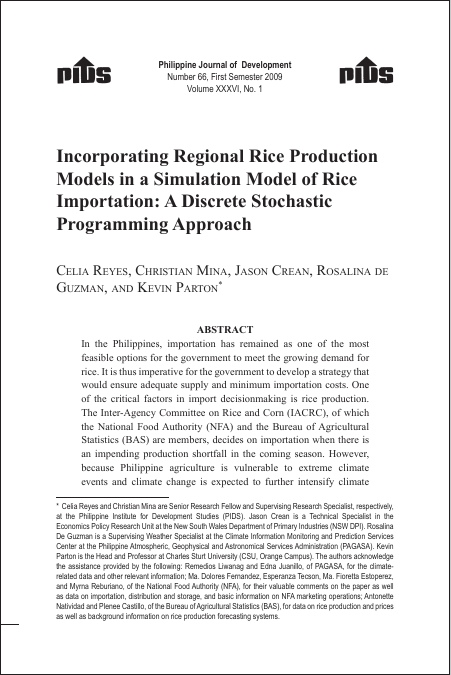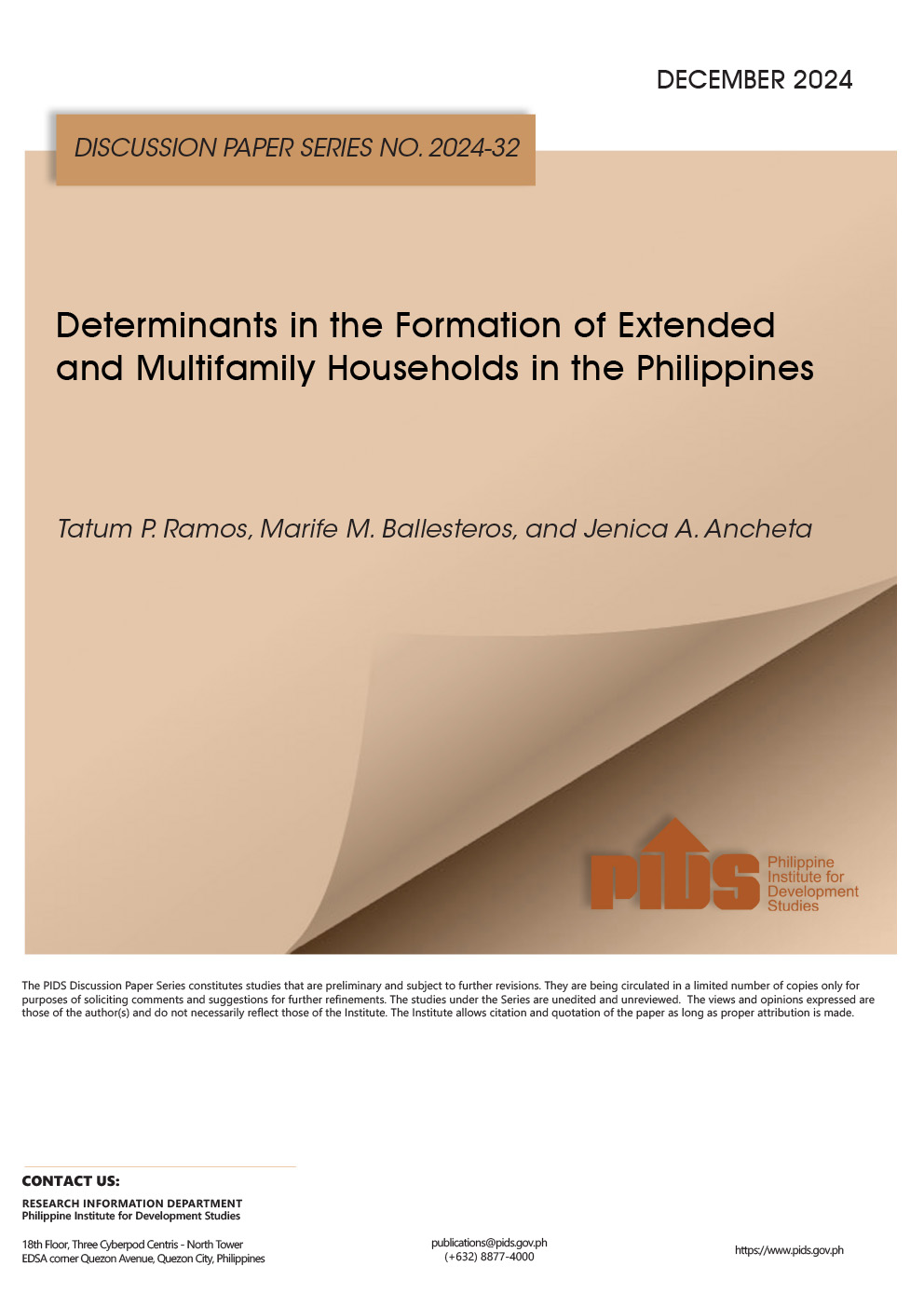The study was conducted to identify risk-efficient cropping schedules for corn farmers in Matalom, Leyte, Philippines using stochastic dominance analysis of simulated yields, given the El Nino Southern Oscillation (ENSO) forecasts during the cropping period. Actual weather data, with missing observations estimated using a weather generating software, were used in constructing weather data sets. These data, together with crop parameters and soil characteristics in the study site, were used as inputs to generate probability distributions of yields during different planting schedules. The simulated yield distributions were classified according to the ENSO phases prevailing during the cropping period. Stochastic dominance analysis was applied on the yield distributions to determine the first-degree stochastic dominance (FSD) set and the second-degree stochastic dominance (SSD) set. Finally, stochastic dominance with respect to a function (SDWRF) was applied on the SSD set to identify risk-efficient schedules at different levels of risk aversion. Risk-efficient schedules were identified for each cropping season and under each ENSO phase. It was found out that some June-July schedules (during the first season) and some December schedules (during the second season) are more risk-efficient than traditional schedules.













